#traditional Icelandic cuisine is simply awful
Text
One of the hardest things I've ever had to do as an Icelandic person is attend a multi-cultural dinner party where everyone brought a traditional dish from their home country
#we almost gave up and brought something danish instead for the sake of it being edible#in the end though we settled on a sort of bread casserole because everyone in my family agreed we haven't seen anyone#anywhere else doing that shit#traditional Icelandic cuisine is simply awful
145 notes
·
View notes
Text
Embark on a Journey of Discovery with Chile Vacation Tours
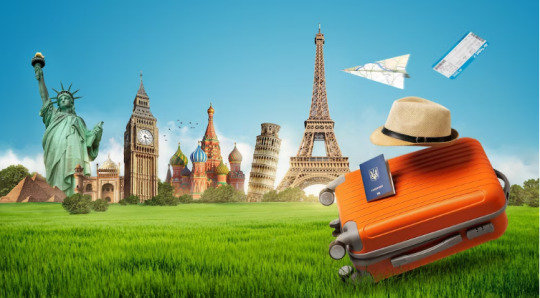
In the heart of South America lies a destination of unparalleled beauty, a land of diverse landscapes, vibrant cultures, and breathtaking scenery – Chile. Sita Tours, a name synonymous with excellence in travel, invites you to embark on an extraordinary adventure with their meticulously crafted Chile Vacation Tours. In this article, we explore the allure of Chile and how Sita Tours transforms vacations into unforgettable journeys.
Chile: A Tapestry of Wonders:
Chile, stretching from the arid Atacama Desert to the pristine beauty of Patagonia, offers a kaleidoscope of experiences for travelers. Sita Tours' Chile Vacation Tours are designed to unravel the layers of this captivating country, providing a comprehensive exploration of its natural wonders, cultural richness, and warm hospitality.
More Information
Egypt Family Tour From USA
Estonia Lithuania Latvia Tour
Iceland 6 Day Tour From USA
Jordan Vacation Tours
Kenya Family Tours From USA
Immersive Cultural Experiences:
What sets Sita Tours apart is its commitment to providing more than just a tourist experience – it's about cultural immersion. The Chile Vacation Tours curated by Sita Tours delve into the heart of Chilean culture, allowing travelers to connect with local communities, savor authentic cuisine, and witness traditional performances. Every moment becomes an opportunity to forge a deeper connection with the essence of Chile.
Diverse Landscapes, One Journey:
From the bustling streets of Santiago to the mystical allure of the Atacama Desert, Sita Tours' Chile Vacation Tours showcase the diverse landscapes that make Chile a traveler's paradise. Explore the colorful port city of Valparaíso, where art and history converge, or venture into the lush valleys of the Central Wine Region, discovering the secrets of Chilean winemaking.
Patagonia, a region of untamed beauty, is another highlight of Sita Tours' Chile Vacation Tours. Traverse through the awe-inspiring landscapes, where glaciers, fjords, and snow-capped peaks create a dramatic backdrop. With expert guides leading the way, every step in Patagonia is a step into the heart of nature's grandeur.
Adventure and Relaxation:
Sita Tours understands that every traveler seeks a blend of adventure and relaxation. Whether it's trekking through the Andes, kayaking on pristine lakes, or simply unwinding in a hot spring, the Chile Vacation Tours are curated to cater to a variety of interests. Each day offers a new adventure, ensuring that the journey is as diverse and dynamic as the landscapes themselves.
Comfort and Luxury Amidst Nature:
While the focus is on exploration, Sita Tours ensures that travelers experience the utmost comfort and luxury. Accommodations are carefully selected, providing a seamless blend of modern amenities and the charm of Chilean hospitality. After a day of exploration, retreat to a cozy haven that complements the beauty of the surroundings.
Responsible Tourism:
Sita Tours is committed to responsible tourism, ensuring that the impact on the environment and local communities is minimal. The Chile Vacation Tours follow sustainable practices, contributing to the preservation of Chile's natural wonders and supporting local initiatives. Travelers can explore with the assurance that their journey leaves a positive footprint.
Crafting Lasting Memories:
A journey with Sita Tours is not just a vacation; it's an odyssey of discovery and enrichment. From the bustling cities to the serene landscapes, every moment is an opportunity to create lasting memories. Sita Tours' Chile Vacation Tours offer a unique blend of adventure, culture, and relaxation, ensuring that every traveler returns with a collection of stories that echo the spirit of Chile.
Conclusion:
Sita Tours invites you to venture into the heart of Chile with their meticulously crafted Chile Vacation Tours. As you explore the diverse landscapes, engage with local cultures, and revel in the natural beauty, Sita Tours ensures that your journey is nothing short of extraordinary. Let Chile captivate your senses, and let Sita Tours be your guide to an unforgettable experience in this South American gem.
0 notes
Text
Unleashing the Spirit of Adventure: Exploring the World Through Travels and Tours
Introduction:
In an increasingly interconnected world, the allure of travel and tours has captured the hearts of adventurers seeking to break free from the monotony of everyday life. Whether it's exploring exotic landscapes, immersing in vibrant cultures, or embarking on thrilling adventures, travel has become a transformative experience that opens doors to new perspectives and lifelong memories. From ancient wonders to modern marvels, the world is a tapestry of destinations waiting to be discovered. In this article, we will delve into the realm of travels and tours, unveiling the magic they hold and the reasons why they continue to enchant wanderlust-filled souls.
Cultural Immersion:
One of the greatest joys of embarking on travels and tours is the opportunity to immerse oneself in diverse cultures. From savoring tantalizing local cuisines to engaging in traditional ceremonies and festivities, traveling offers an authentic experience that textbooks simply cannot replicate. Whether it's exploring the bustling markets of Marrakech, dancing to the rhythm of Samba in Rio de Janeiro, or meditating in the serene temples of Kyoto, cultural immersion fosters a deeper understanding and appreciation for the world's rich tapestry of traditions and customs.
Also Read : Flyblue Travels
Natural Wonders:
2. Travels and tours also provide a gateway to Mother Nature's awe-inspiring creations. From towering mountains to cascading waterfalls and pristine beaches, the Earth is adorned with natural wonders that leave travelers in awe of their sheer beauty. Be it hiking through the majestic peaks of the Himalayas, snorkeling in the Great Barrier Reef, or marveling at the mystical Northern Lights in Iceland, exploring these natural treasures offers a sense of wonder and connection with the planet we call home.
Historical Exploration:
3. For history enthusiasts, travels and tours present an opportunity to walk in the footsteps of the past. Visiting ancient ruins, archaeological sites, and historical landmarks allows us to delve into the stories that have shaped civilizations. Unraveling the mysteries of the Pyramids of Giza, walking along the Great Wall of China, or wandering through the ruins of Machu Picchu can transport us to bygone eras, providing invaluable insights into human history and the resilience of ancient civilizations.
Adventure and Adrenaline:
4. For the thrill-seekers among us, travels and tours offer a plethora of adrenaline-pumping activities. From white-water rafting in the raging rapids of the Colorado River to bungee jumping off New Zealand's iconic Kawarau Bridge or paragliding over the Swiss Alps, adventure tourism allows us to push our limits and embrace the rush of excitement. These heart-pounding experiences not only satiate our thirst for adventure but also instill a sense of accomplishment and empowerment.
Personal Growth and Self-Discovery:
5. Beyond the physical exploration, travels and tours provide a transformative journey of personal growth and self-discovery. Stepping out of our comfort zones and immersing ourselves in unfamiliar environments fosters resilience, adaptability, and a broader perspective on life. Travel challenges us to confront our preconceived notions, broaden our horizons, and develop a deeper appreciation for the interconnectedness of the world and its people.
Also Read : Flyblue Travels
Conclusion:
Travels and tours offer a gateway to a world of wonders, where every destination has its own story to tell and every experience leaves an indelible mark on our souls. From cultural immersion to natural exploration, historical enlightenment to adrenaline-fueled adventures, the realm of travel beckons us to embark on a journey of self-discovery and personal growth. So, pack your bags, embrace the spirit of adventure, and let travels and tours guide you on an extraordinary voyage of a lifetime.
There is a spirit of adventure that resides within each one of us, beckoning us to explore the world and seek new experiences. It is this desire for discovery and the unknown that has led humans to embark on journeys since ancient times. Today, with the availability of modern transportation and the rise of travel and tour services, the world is more accessible than ever before. In this article, we will delve into the importance of traveling and the role of tours in unleashing our spirit of adventure.
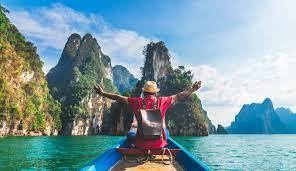
The Importance of Travel
Traveling is not merely about visiting new destinations or taking vacations; it is a transformative experience that broadens our horizons, fosters personal growth, and deepens our understanding of the world. When we step out of our comfort zones and explore unfamiliar territories, we are exposed to diverse cultures, traditions, and perspectives that challenge our preconceived notions and expand our worldview.
One of the most significant benefits of travel is its ability to promote cultural understanding and tolerance. By immersing ourselves in different environments, we develop empathy and respect for other ways of life. We learn to appreciate the beauty of diversity and recognize the shared values that unite humanity. Such experiences can break down barriers and contribute to a more peaceful and inclusive world.
Furthermore, travel allows us to break free from the monotony of everyday life and escape the stresses and routines that can weigh us down. It rejuvenates our spirits and renews our sense of wonder. Whether it's witnessing the majesty of natural landscapes, marveling at architectural wonders, or indulging in exotic cuisines, each new encounter offers an opportunity for awe and inspiration.
The Role of Tours in Unleashing Adventure
While independent travel has its merits, organized tours play a vital role in unleashing the spirit of adventure. They offer a structured and convenient way to explore unfamiliar destinations, especially for those who may be new to travel or prefer not to navigate the complexities of planning on their own.
First and foremost, tours provide a wealth of knowledge and expertise. Professional tour guides are well-versed in the history, culture, and attractions of the places they lead tours in. They can offer valuable insights, interesting anecdotes, and answer questions, enriching the experience and making it more meaningful. With their guidance, travelers can delve deeper into the destinations, understanding their significance and context.
Moreover, tours often provide access to exclusive experiences and hidden gems that might otherwise be difficult to uncover. Local guides, who are intimately familiar with their surroundings, can take travelers off the beaten path and introduce them to lesser-known but equally captivating sites. Whether it's a tucked-away café, a secluded hiking trail, or a charming village, these hidden treasures can truly enhance the sense of adventure and discovery.
Another advantage of tours is the opportunity to connect with like-minded individuals and build lasting friendships. Shared experiences create bonds and foster a sense of camaraderie among fellow travelers. The diversity of backgrounds and perspectives within a tour group enriches discussions and fosters mutual learning. Lifelong connections can be forged, transcending geographical boundaries and creating a global network of friends.
Furthermore, tours often alleviate logistical burdens and provide a sense of security. Accommodation, transportation, and itinerary planning are taken care of, allowing travelers to focus on immersing themselves in the experience. This is particularly valuable for those with limited time or specific interests, as tours can offer curated itineraries that maximize the exploration of key attractions.
Also Read : Flyblue Travels
0 notes
Photo
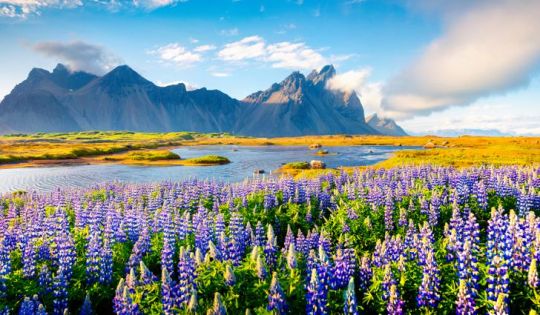
Iceland & Greenland
It’s certainly a question we get often enough – which destination is better for Arctic expeditions: Iceland or Greenland? Although differences between the two abound, there is a lot they have in common: both are exceptionally picturesque (for different reasons) and both offer phenomenal chances for wildlife-viewing and adventures in spectacular Arctic wilderness.
Figuring one which one is best overall is near-impossible although knowing a little about the two – and what sets them apart – will go a long way in helping you decide which one is ideal for you.
Iceland
Iceland seems to be the word on everyone’s lips nowadays, interest in the country rising swiftly in the last couple of years. And why on earth not? Iceland is truly sensational, a country revered for its incredible glaciers, dramatic fjords, jaw-dropping volcanoes, thermal springs, stupendous waterfalls and an absolutely colossal array of outdoor pursuits in striking wilderness that’s as lush and enticing as any you’ll ever see. Iceland speaks to the thrill-seeker and the nature lover, one who wants to indulge in both passions simultaneously.
Its capital city, Reykjavik, is one of the most vibrant cities in the world, one boasting a wicked nightlife, fantastic dining, distinctive architecture and easy-going people. Visiting Iceland is as easy as booking a flight to Reykjavik and taking it from there – there’s really nothing excessively difficult about travelling to Iceland, a country that showcases more variety of landscapes than its name would ever lead you to believe. Iceland is simply a fabulous travel destination if you love to mix a bit of city-buzz with your outdoor adventures and have plenty of comforts and luxuries along the whole way.
Greenland
hen there’s Greenland, Iceland’s westerly neighbour. Head to Greenland after visiting Iceland and you’ll be excused for thinking someone got totally drunk and mismatched their names. This magical icy wonderland is the most sparsely-populated non-continental island on earth.
There are barely 50,000 in this enormous expanse of Arctic land, as opposed to 340,000 who live in Iceland, which is 21 times smaller. Greenland isn’t technically an independent country, per se, but and an island administered by Denmark, a country with which it has had a strong bond for hundreds of years. A handful of insanely picturesque villages dot the coastline, interspersed with awe-inspiring fjords, glaciers and fantastical snowy landscapes.
There’s no road-infrastructure here so travelling is done either by helicopter or boat, both of which are expensive but immensely worthwhile. On land, you’ll meet a proud and traditional people, one that somehow treasures its isolation from the rest of the world. The local culture is unique and very fascinating, having developed its own tradition, customs, cuisine, art and costumes over the centuries – outside of the main towns, however, you journey is very much about Greenland’s overwhelming nature.
Greenland is unlike any other place on earth, revered for its fast-moving icebergs, UNESCO-listed fjords, its breath-taking glaciers (Jakobshavn is over 50km in length!) and its utterly surreal atmosphere. Nuuk, the capital, is a quirky place to explore, framed by astounding mountains and flanked by icebergs and an incredible fjord.
This isn’t the most picturesque town in Greenland but, being home to 17,000 hardy folks, it is the largest. Greenland is a hub for Arctic wildlife, both on its eastern shores – the Greenland Sea it shares with Iceland – but particularly on its western shores. Here is where you’ll find the Northwest Passage and Baffin Bay, the reputed ‘wildlife superhighway of the Arctic’. As opposed to Iceland, travel to Greenland necessitates some serious pre-planning. Everything should be pre-planned and pre-booked, Greenland is certainly not a country that facilitates last-minute independent travel.
0 notes
Photo
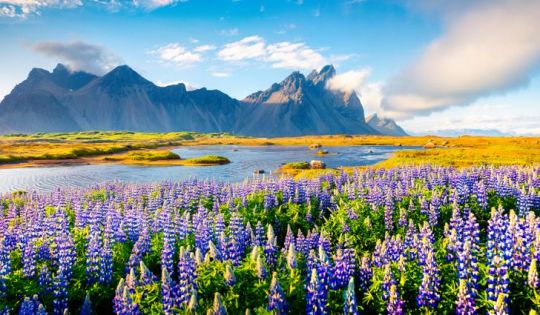
Iceland & Greenland
It’s certainly a question we get often enough – which destination is better for Arctic expeditions: Iceland or Greenland? Although differences between the two abound, there is a lot they have in common: both are exceptionally picturesque (for different reasons) and both offer phenomenal chances for wildlife-viewing and adventures in spectacular Arctic wilderness.
Figuring one which one is best overall is near-impossible although knowing a little about the two – and what sets them apart – will go a long way in helping you decide which one is ideal for you.
Iceland
Iceland seems to be the word on everyone’s lips nowadays, interest in the country rising swiftly in the last couple of years. And why on earth not? Iceland is truly sensational, a country revered for its incredible glaciers, dramatic fjords, jaw-dropping volcanoes, thermal springs, stupendous waterfalls and an absolutely colossal array of outdoor pursuits in striking wilderness that’s as lush and enticing as any you’ll ever see. Iceland speaks to the thrill-seeker and the nature lover, one who wants to indulge in both passions simultaneously.
Its capital city, Reykjavik, is one of the most vibrant cities in the world, one boasting a wicked nightlife, fantastic dining, distinctive architecture and easy-going people. Visiting Iceland is as easy as booking a flight to Reykjavik and taking it from there – there’s really nothing excessively difficult about travelling to Iceland, a country that showcases more variety of landscapes than its name would ever lead you to believe. Iceland is simply a fabulous travel destination if you love to mix a bit of city-buzz with your outdoor adventures and have plenty of comforts and luxuries along the whole way.
Greenland
hen there’s Greenland, Iceland’s westerly neighbour. Head to Greenland after visiting Iceland and you’ll be excused for thinking someone got totally drunk and mismatched their names. This magical icy wonderland is the most sparsely-populated non-continental island on earth.
There are barely 50,000 in this enormous expanse of Arctic land, as opposed to 340,000 who live in Iceland, which is 21 times smaller. Greenland isn’t technically an independent country, per se, but and an island administered by Denmark, a country with which it has had a strong bond for hundreds of years. A handful of insanely picturesque villages dot the coastline, interspersed with awe-inspiring fjords, glaciers and fantastical snowy landscapes.
There’s no road-infrastructure here so travelling is done either by helicopter or boat, both of which are expensive but immensely worthwhile. On land, you’ll meet a proud and traditional people, one that somehow treasures its isolation from the rest of the world. The local culture is unique and very fascinating, having developed its own tradition, customs, cuisine, art and costumes over the centuries – outside of the main towns, however, you journey is very much about Greenland’s overwhelming nature.
Greenland is unlike any other place on earth, revered for its fast-moving icebergs, UNESCO-listed fjords, its breath-taking glaciers (Jakobshavn is over 50km in length!) and its utterly surreal atmosphere. Nuuk, the capital, is a quirky place to explore, framed by astounding mountains and flanked by icebergs and an incredible fjord.
This isn’t the most picturesque town in Greenland but, being home to 17,000 hardy folks, it is the largest. Greenland is a hub for Arctic wildlife, both on its eastern shores – the Greenland Sea it shares with Iceland – but particularly on its western shores. Here is where you’ll find the Northwest Passage and Baffin Bay, the reputed ‘wildlife superhighway of the Arctic’. As opposed to Iceland, travel to Greenland necessitates some serious pre-planning. Everything should be pre-planned and pre-booked, Greenland is certainly not a country that facilitates last-minute independent travel.
0 notes
Photo
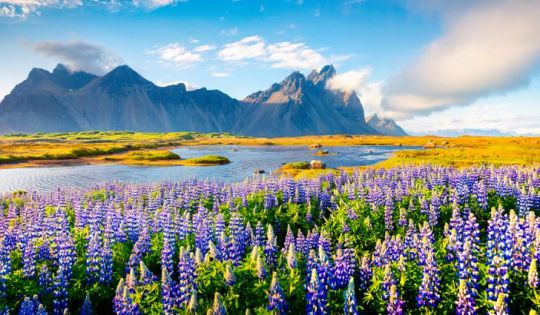
Iceland & Greenland
It’s certainly a question we get often enough – which destination is better for Arctic expeditions: Iceland or Greenland? Although differences between the two abound, there is a lot they have in common: both are exceptionally picturesque (for different reasons) and both offer phenomenal chances for wildlife-viewing and adventures in spectacular Arctic wilderness.
Figuring one which one is best overall is near-impossible although knowing a little about the two – and what sets them apart – will go a long way in helping you decide which one is ideal for you.
Iceland
Iceland seems to be the word on everyone’s lips nowadays, interest in the country rising swiftly in the last couple of years. And why on earth not? Iceland is truly sensational, a country revered for its incredible glaciers, dramatic fjords, jaw-dropping volcanoes, thermal springs, stupendous waterfalls and an absolutely colossal array of outdoor pursuits in striking wilderness that’s as lush and enticing as any you’ll ever see. Iceland speaks to the thrill-seeker and the nature lover, one who wants to indulge in both passions simultaneously.
Its capital city, Reykjavik, is one of the most vibrant cities in the world, one boasting a wicked nightlife, fantastic dining, distinctive architecture and easy-going people. Visiting Iceland is as easy as booking a flight to Reykjavik and taking it from there – there’s really nothing excessively difficult about travelling to Iceland, a country that showcases more variety of landscapes than its name would ever lead you to believe. Iceland is simply a fabulous travel destination if you love to mix a bit of city-buzz with your outdoor adventures and have plenty of comforts and luxuries along the whole way.
Greenland
hen there’s Greenland, Iceland’s westerly neighbour. Head to Greenland after visiting Iceland and you’ll be excused for thinking someone got totally drunk and mismatched their names. This magical icy wonderland is the most sparsely-populated non-continental island on earth.
There are barely 50,000 in this enormous expanse of Arctic land, as opposed to 340,000 who live in Iceland, which is 21 times smaller. Greenland isn’t technically an independent country, per se, but and an island administered by Denmark, a country with which it has had a strong bond for hundreds of years. A handful of insanely picturesque villages dot the coastline, interspersed with awe-inspiring fjords, glaciers and fantastical snowy landscapes.
There’s no road-infrastructure here so travelling is done either by helicopter or boat, both of which are expensive but immensely worthwhile. On land, you’ll meet a proud and traditional people, one that somehow treasures its isolation from the rest of the world. The local culture is unique and very fascinating, having developed its own tradition, customs, cuisine, art and costumes over the centuries – outside of the main towns, however, you journey is very much about Greenland’s overwhelming nature.
Greenland is unlike any other place on earth, revered for its fast-moving icebergs, UNESCO-listed fjords, its breath-taking glaciers (Jakobshavn is over 50km in length!) and its utterly surreal atmosphere. Nuuk, the capital, is a quirky place to explore, framed by astounding mountains and flanked by icebergs and an incredible fjord.
This isn’t the most picturesque town in Greenland but, being home to 17,000 hardy folks, it is the largest. Greenland is a hub for Arctic wildlife, both on its eastern shores – the Greenland Sea it shares with Iceland – but particularly on its western shores. Here is where you’ll find the Northwest Passage and Baffin Bay, the reputed ‘wildlife superhighway of the Arctic’. As opposed to Iceland, travel to Greenland necessitates some serious pre-planning. Everything should be pre-planned and pre-booked, Greenland is certainly not a country that facilitates last-minute independent travel.
0 notes
Photo
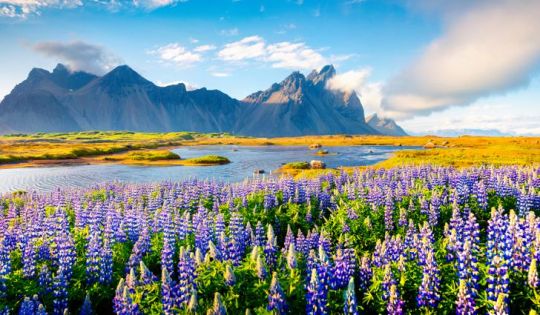
Iceland & Greenland
It’s certainly a question we get often enough – which destination is better for Arctic expeditions: Iceland or Greenland? Although differences between the two abound, there is a lot they have in common: both are exceptionally picturesque (for different reasons) and both offer phenomenal chances for wildlife-viewing and adventures in spectacular Arctic wilderness.
Figuring one which one is best overall is near-impossible although knowing a little about the two – and what sets them apart – will go a long way in helping you decide which one is ideal for you.
Iceland
Iceland seems to be the word on everyone’s lips nowadays, interest in the country rising swiftly in the last couple of years. And why on earth not? Iceland is truly sensational, a country revered for its incredible glaciers, dramatic fjords, jaw-dropping volcanoes, thermal springs, stupendous waterfalls and an absolutely colossal array of outdoor pursuits in striking wilderness that’s as lush and enticing as any you’ll ever see. Iceland speaks to the thrill-seeker and the nature lover, one who wants to indulge in both passions simultaneously.
Its capital city, Reykjavik, is one of the most vibrant cities in the world, one boasting a wicked nightlife, fantastic dining, distinctive architecture and easy-going people. Visiting Iceland is as easy as booking a flight to Reykjavik and taking it from there – there’s really nothing excessively difficult about travelling to Iceland, a country that showcases more variety of landscapes than its name would ever lead you to believe. Iceland is simply a fabulous travel destination if you love to mix a bit of city-buzz with your outdoor adventures and have plenty of comforts and luxuries along the whole way.
Greenland
hen there’s Greenland, Iceland’s westerly neighbour. Head to Greenland after visiting Iceland and you’ll be excused for thinking someone got totally drunk and mismatched their names. This magical icy wonderland is the most sparsely-populated non-continental island on earth.
There are barely 50,000 in this enormous expanse of Arctic land, as opposed to 340,000 who live in Iceland, which is 21 times smaller. Greenland isn’t technically an independent country, per se, but and an island administered by Denmark, a country with which it has had a strong bond for hundreds of years. A handful of insanely picturesque villages dot the coastline, interspersed with awe-inspiring fjords, glaciers and fantastical snowy landscapes.
There’s no road-infrastructure here so travelling is done either by helicopter or boat, both of which are expensive but immensely worthwhile. On land, you’ll meet a proud and traditional people, one that somehow treasures its isolation from the rest of the world. The local culture is unique and very fascinating, having developed its own tradition, customs, cuisine, art and costumes over the centuries – outside of the main towns, however, you journey is very much about Greenland’s overwhelming nature.
Greenland is unlike any other place on earth, revered for its fast-moving icebergs, UNESCO-listed fjords, its breath-taking glaciers (Jakobshavn is over 50km in length!) and its utterly surreal atmosphere. Nuuk, the capital, is a quirky place to explore, framed by astounding mountains and flanked by icebergs and an incredible fjord.
This isn’t the most picturesque town in Greenland but, being home to 17,000 hardy folks, it is the largest. Greenland is a hub for Arctic wildlife, both on its eastern shores – the Greenland Sea it shares with Iceland – but particularly on its western shores. Here is where you’ll find the Northwest Passage and Baffin Bay, the reputed ‘wildlife superhighway of the Arctic’. As opposed to Iceland, travel to Greenland necessitates some serious pre-planning. Everything should be pre-planned and pre-booked, Greenland is certainly not a country that facilitates last-minute independent travel.
0 notes
Photo
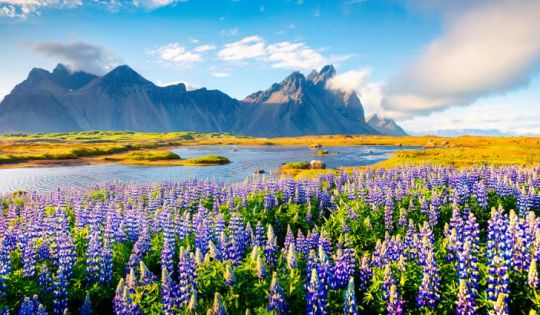
Iceland & Greenland
It’s certainly a question we get often enough – which destination is better for Arctic expeditions: Iceland or Greenland? Although differences between the two abound, there is a lot they have in common: both are exceptionally picturesque (for different reasons) and both offer phenomenal chances for wildlife-viewing and adventures in spectacular Arctic wilderness.
Figuring one which one is best overall is near-impossible although knowing a little about the two – and what sets them apart – will go a long way in helping you decide which one is ideal for you.
Iceland
Iceland seems to be the word on everyone’s lips nowadays, interest in the country rising swiftly in the last couple of years. And why on earth not? Iceland is truly sensational, a country revered for its incredible glaciers, dramatic fjords, jaw-dropping volcanoes, thermal springs, stupendous waterfalls and an absolutely colossal array of outdoor pursuits in striking wilderness that’s as lush and enticing as any you’ll ever see. Iceland speaks to the thrill-seeker and the nature lover, one who wants to indulge in both passions simultaneously.
Its capital city, Reykjavik, is one of the most vibrant cities in the world, one boasting a wicked nightlife, fantastic dining, distinctive architecture and easy-going people. Visiting Iceland is as easy as booking a flight to Reykjavik and taking it from there – there’s really nothing excessively difficult about travelling to Iceland, a country that showcases more variety of landscapes than its name would ever lead you to believe. Iceland is simply a fabulous travel destination if you love to mix a bit of city-buzz with your outdoor adventures and have plenty of comforts and luxuries along the whole way.
Greenland
hen there’s Greenland, Iceland’s westerly neighbour. Head to Greenland after visiting Iceland and you’ll be excused for thinking someone got totally drunk and mismatched their names. This magical icy wonderland is the most sparsely-populated non-continental island on earth.
There are barely 50,000 in this enormous expanse of Arctic land, as opposed to 340,000 who live in Iceland, which is 21 times smaller. Greenland isn’t technically an independent country, per se, but and an island administered by Denmark, a country with which it has had a strong bond for hundreds of years. A handful of insanely picturesque villages dot the coastline, interspersed with awe-inspiring fjords, glaciers and fantastical snowy landscapes.
There’s no road-infrastructure here so travelling is done either by helicopter or boat, both of which are expensive but immensely worthwhile. On land, you’ll meet a proud and traditional people, one that somehow treasures its isolation from the rest of the world. The local culture is unique and very fascinating, having developed its own tradition, customs, cuisine, art and costumes over the centuries – outside of the main towns, however, you journey is very much about Greenland’s overwhelming nature.
Greenland is unlike any other place on earth, revered for its fast-moving icebergs, UNESCO-listed fjords, its breath-taking glaciers (Jakobshavn is over 50km in length!) and its utterly surreal atmosphere. Nuuk, the capital, is a quirky place to explore, framed by astounding mountains and flanked by icebergs and an incredible fjord.
This isn’t the most picturesque town in Greenland but, being home to 17,000 hardy folks, it is the largest. Greenland is a hub for Arctic wildlife, both on its eastern shores – the Greenland Sea it shares with Iceland – but particularly on its western shores. Here is where you’ll find the Northwest Passage and Baffin Bay, the reputed ‘wildlife superhighway of the Arctic’. As opposed to Iceland, travel to Greenland necessitates some serious pre-planning. Everything should be pre-planned and pre-booked, Greenland is certainly not a country that facilitates last-minute independent travel.
0 notes
Photo

Iceland & Greenland
It’s certainly a question we get often enough – which destination is better for Arctic expeditions: Iceland or Greenland? Although differences between the two abound, there is a lot they have in common: both are exceptionally picturesque (for different reasons) and both offer phenomenal chances for wildlife-viewing and adventures in spectacular Arctic wilderness.
Figuring one which one is best overall is near-impossible although knowing a little about the two – and what sets them apart – will go a long way in helping you decide which one is ideal for you.
Iceland
Iceland seems to be the word on everyone’s lips nowadays, interest in the country rising swiftly in the last couple of years. And why on earth not? Iceland is truly sensational, a country revered for its incredible glaciers, dramatic fjords, jaw-dropping volcanoes, thermal springs, stupendous waterfalls and an absolutely colossal array of outdoor pursuits in striking wilderness that’s as lush and enticing as any you’ll ever see. Iceland speaks to the thrill-seeker and the nature lover, one who wants to indulge in both passions simultaneously.
Its capital city, Reykjavik, is one of the most vibrant cities in the world, one boasting a wicked nightlife, fantastic dining, distinctive architecture and easy-going people. Visiting Iceland is as easy as booking a flight to Reykjavik and taking it from there – there’s really nothing excessively difficult about travelling to Iceland, a country that showcases more variety of landscapes than its name would ever lead you to believe. Iceland is simply a fabulous travel destination if you love to mix a bit of city-buzz with your outdoor adventures and have plenty of comforts and luxuries along the whole way.
Greenland
hen there’s Greenland, Iceland’s westerly neighbour. Head to Greenland after visiting Iceland and you’ll be excused for thinking someone got totally drunk and mismatched their names. This magical icy wonderland is the most sparsely-populated non-continental island on earth.
There are barely 50,000 in this enormous expanse of Arctic land, as opposed to 340,000 who live in Iceland, which is 21 times smaller. Greenland isn’t technically an independent country, per se, but and an island administered by Denmark, a country with which it has had a strong bond for hundreds of years. A handful of insanely picturesque villages dot the coastline, interspersed with awe-inspiring fjords, glaciers and fantastical snowy landscapes.
There’s no road-infrastructure here so travelling is done either by helicopter or boat, both of which are expensive but immensely worthwhile. On land, you’ll meet a proud and traditional people, one that somehow treasures its isolation from the rest of the world. The local culture is unique and very fascinating, having developed its own tradition, customs, cuisine, art and costumes over the centuries – outside of the main towns, however, you journey is very much about Greenland’s overwhelming nature.
Greenland is unlike any other place on earth, revered for its fast-moving icebergs, UNESCO-listed fjords, its breath-taking glaciers (Jakobshavn is over 50km in length!) and its utterly surreal atmosphere. Nuuk, the capital, is a quirky place to explore, framed by astounding mountains and flanked by icebergs and an incredible fjord.
This isn’t the most picturesque town in Greenland but, being home to 17,000 hardy folks, it is the largest. Greenland is a hub for Arctic wildlife, both on its eastern shores – the Greenland Sea it shares with Iceland – but particularly on its western shores. Here is where you’ll find the Northwest Passage and Baffin Bay, the reputed ‘wildlife superhighway of the Arctic’. As opposed to Iceland, travel to Greenland necessitates some serious pre-planning. Everything should be pre-planned and pre-booked, Greenland is certainly not a country that facilitates last-minute independent travel.
0 notes
Photo
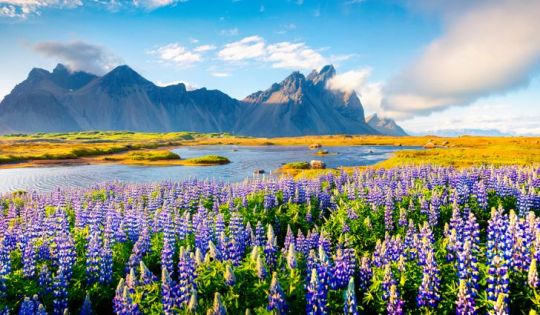
Iceland & Greenland
It’s certainly a question we get often enough – which destination is better for Arctic expeditions: Iceland or Greenland? Although differences between the two abound, there is a lot they have in common: both are exceptionally picturesque (for different reasons) and both offer phenomenal chances for wildlife-viewing and adventures in spectacular Arctic wilderness.
Figuring one which one is best overall is near-impossible although knowing a little about the two – and what sets them apart – will go a long way in helping you decide which one is ideal for you.
Iceland
Iceland seems to be the word on everyone’s lips nowadays, interest in the country rising swiftly in the last couple of years. And why on earth not? Iceland is truly sensational, a country revered for its incredible glaciers, dramatic fjords, jaw-dropping volcanoes, thermal springs, stupendous waterfalls and an absolutely colossal array of outdoor pursuits in striking wilderness that’s as lush and enticing as any you’ll ever see. Iceland speaks to the thrill-seeker and the nature lover, one who wants to indulge in both passions simultaneously.
Its capital city, Reykjavik, is one of the most vibrant cities in the world, one boasting a wicked nightlife, fantastic dining, distinctive architecture and easy-going people. Visiting Iceland is as easy as booking a flight to Reykjavik and taking it from there – there’s really nothing excessively difficult about travelling to Iceland, a country that showcases more variety of landscapes than its name would ever lead you to believe. Iceland is simply a fabulous travel destination if you love to mix a bit of city-buzz with your outdoor adventures and have plenty of comforts and luxuries along the whole way.
Greenland
hen there’s Greenland, Iceland’s westerly neighbour. Head to Greenland after visiting Iceland and you’ll be excused for thinking someone got totally drunk and mismatched their names. This magical icy wonderland is the most sparsely-populated non-continental island on earth.
There are barely 50,000 in this enormous expanse of Arctic land, as opposed to 340,000 who live in Iceland, which is 21 times smaller. Greenland isn’t technically an independent country, per se, but and an island administered by Denmark, a country with which it has had a strong bond for hundreds of years. A handful of insanely picturesque villages dot the coastline, interspersed with awe-inspiring fjords, glaciers and fantastical snowy landscapes.
There’s no road-infrastructure here so travelling is done either by helicopter or boat, both of which are expensive but immensely worthwhile. On land, you’ll meet a proud and traditional people, one that somehow treasures its isolation from the rest of the world. The local culture is unique and very fascinating, having developed its own tradition, customs, cuisine, art and costumes over the centuries – outside of the main towns, however, you journey is very much about Greenland’s overwhelming nature.
Greenland is unlike any other place on earth, revered for its fast-moving icebergs, UNESCO-listed fjords, its breath-taking glaciers (Jakobshavn is over 50km in length!) and its utterly surreal atmosphere. Nuuk, the capital, is a quirky place to explore, framed by astounding mountains and flanked by icebergs and an incredible fjord.
This isn’t the most picturesque town in Greenland but, being home to 17,000 hardy folks, it is the largest. Greenland is a hub for Arctic wildlife, both on its eastern shores – the Greenland Sea it shares with Iceland – but particularly on its western shores. Here is where you’ll find the Northwest Passage and Baffin Bay, the reputed ‘wildlife superhighway of the Arctic’. As opposed to Iceland, travel to Greenland necessitates some serious pre-planning. Everything should be pre-planned and pre-booked, Greenland is certainly not a country that facilitates last-minute independent travel.
0 notes
Photo
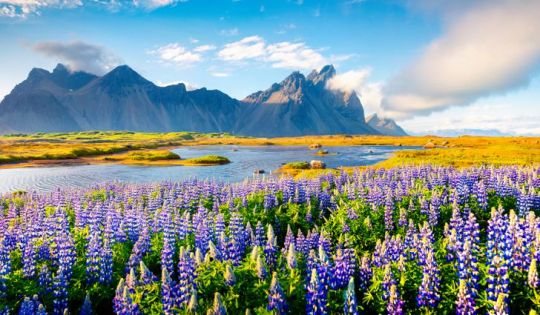
Iceland & Greenland
It’s certainly a question we get often enough – which destination is better for Arctic expeditions: Iceland or Greenland? Although differences between the two abound, there is a lot they have in common: both are exceptionally picturesque (for different reasons) and both offer phenomenal chances for wildlife-viewing and adventures in spectacular Arctic wilderness.
Figuring one which one is best overall is near-impossible although knowing a little about the two – and what sets them apart – will go a long way in helping you decide which one is ideal for you.
Iceland
Iceland seems to be the word on everyone’s lips nowadays, interest in the country rising swiftly in the last couple of years. And why on earth not? Iceland is truly sensational, a country revered for its incredible glaciers, dramatic fjords, jaw-dropping volcanoes, thermal springs, stupendous waterfalls and an absolutely colossal array of outdoor pursuits in striking wilderness that’s as lush and enticing as any you’ll ever see. Iceland speaks to the thrill-seeker and the nature lover, one who wants to indulge in both passions simultaneously.
Its capital city, Reykjavik, is one of the most vibrant cities in the world, one boasting a wicked nightlife, fantastic dining, distinctive architecture and easy-going people. Visiting Iceland is as easy as booking a flight to Reykjavik and taking it from there – there’s really nothing excessively difficult about travelling to Iceland, a country that showcases more variety of landscapes than its name would ever lead you to believe. Iceland is simply a fabulous travel destination if you love to mix a bit of city-buzz with your outdoor adventures and have plenty of comforts and luxuries along the whole way.
Greenland
hen there’s Greenland, Iceland’s westerly neighbour. Head to Greenland after visiting Iceland and you’ll be excused for thinking someone got totally drunk and mismatched their names. This magical icy wonderland is the most sparsely-populated non-continental island on earth.
There are barely 50,000 in this enormous expanse of Arctic land, as opposed to 340,000 who live in Iceland, which is 21 times smaller. Greenland isn’t technically an independent country, per se, but and an island administered by Denmark, a country with which it has had a strong bond for hundreds of years. A handful of insanely picturesque villages dot the coastline, interspersed with awe-inspiring fjords, glaciers and fantastical snowy landscapes.
There’s no road-infrastructure here so travelling is done either by helicopter or boat, both of which are expensive but immensely worthwhile. On land, you’ll meet a proud and traditional people, one that somehow treasures its isolation from the rest of the world. The local culture is unique and very fascinating, having developed its own tradition, customs, cuisine, art and costumes over the centuries – outside of the main towns, however, you journey is very much about Greenland’s overwhelming nature.
Greenland is unlike any other place on earth, revered for its fast-moving icebergs, UNESCO-listed fjords, its breath-taking glaciers (Jakobshavn is over 50km in length!) and its utterly surreal atmosphere. Nuuk, the capital, is a quirky place to explore, framed by astounding mountains and flanked by icebergs and an incredible fjord.
This isn’t the most picturesque town in Greenland but, being home to 17,000 hardy folks, it is the largest. Greenland is a hub for Arctic wildlife, both on its eastern shores – the Greenland Sea it shares with Iceland – but particularly on its western shores. Here is where you’ll find the Northwest Passage and Baffin Bay, the reputed ‘wildlife superhighway of the Arctic’. As opposed to Iceland, travel to Greenland necessitates some serious pre-planning. Everything should be pre-planned and pre-booked, Greenland is certainly not a country that facilitates last-minute independent travel.
0 notes
Photo
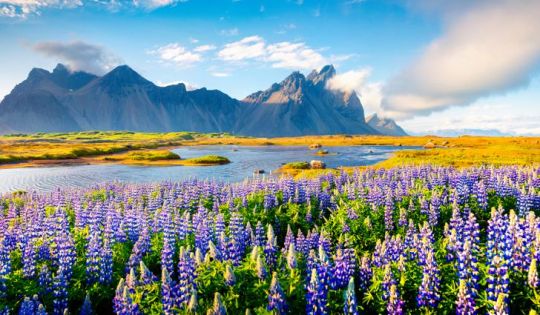
Iceland & Greenland
It’s certainly a question we get often enough – which destination is better for Arctic expeditions: Iceland or Greenland? Although differences between the two abound, there is a lot they have in common: both are exceptionally picturesque (for different reasons) and both offer phenomenal chances for wildlife-viewing and adventures in spectacular Arctic wilderness.
Figuring one which one is best overall is near-impossible although knowing a little about the two – and what sets them apart – will go a long way in helping you decide which one is ideal for you.
Iceland
Iceland seems to be the word on everyone’s lips nowadays, interest in the country rising swiftly in the last couple of years. And why on earth not? Iceland is truly sensational, a country revered for its incredible glaciers, dramatic fjords, jaw-dropping volcanoes, thermal springs, stupendous waterfalls and an absolutely colossal array of outdoor pursuits in striking wilderness that’s as lush and enticing as any you’ll ever see. Iceland speaks to the thrill-seeker and the nature lover, one who wants to indulge in both passions simultaneously.
Its capital city, Reykjavik, is one of the most vibrant cities in the world, one boasting a wicked nightlife, fantastic dining, distinctive architecture and easy-going people. Visiting Iceland is as easy as booking a flight to Reykjavik and taking it from there – there’s really nothing excessively difficult about travelling to Iceland, a country that showcases more variety of landscapes than its name would ever lead you to believe. Iceland is simply a fabulous travel destination if you love to mix a bit of city-buzz with your outdoor adventures and have plenty of comforts and luxuries along the whole way.
Greenland
hen there’s Greenland, Iceland’s westerly neighbour. Head to Greenland after visiting Iceland and you’ll be excused for thinking someone got totally drunk and mismatched their names. This magical icy wonderland is the most sparsely-populated non-continental island on earth.
There are barely 50,000 in this enormous expanse of Arctic land, as opposed to 340,000 who live in Iceland, which is 21 times smaller. Greenland isn’t technically an independent country, per se, but and an island administered by Denmark, a country with which it has had a strong bond for hundreds of years. A handful of insanely picturesque villages dot the coastline, interspersed with awe-inspiring fjords, glaciers and fantastical snowy landscapes.
There’s no road-infrastructure here so travelling is done either by helicopter or boat, both of which are expensive but immensely worthwhile. On land, you’ll meet a proud and traditional people, one that somehow treasures its isolation from the rest of the world. The local culture is unique and very fascinating, having developed its own tradition, customs, cuisine, art and costumes over the centuries – outside of the main towns, however, you journey is very much about Greenland’s overwhelming nature.
Greenland is unlike any other place on earth, revered for its fast-moving icebergs, UNESCO-listed fjords, its breath-taking glaciers (Jakobshavn is over 50km in length!) and its utterly surreal atmosphere. Nuuk, the capital, is a quirky place to explore, framed by astounding mountains and flanked by icebergs and an incredible fjord.
This isn’t the most picturesque town in Greenland but, being home to 17,000 hardy folks, it is the largest. Greenland is a hub for Arctic wildlife, both on its eastern shores – the Greenland Sea it shares with Iceland – but particularly on its western shores. Here is where you’ll find the Northwest Passage and Baffin Bay, the reputed ‘wildlife superhighway of the Arctic’. As opposed to Iceland, travel to Greenland necessitates some serious pre-planning. Everything should be pre-planned and pre-booked, Greenland is certainly not a country that facilitates last-minute independent travel.
0 notes
Photo
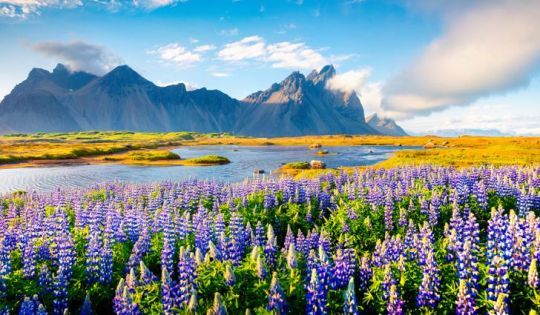
Iceland & Greenland
It’s certainly a question we get often enough – which destination is better for Arctic expeditions: Iceland or Greenland? Although differences between the two abound, there is a lot they have in common: both are exceptionally picturesque (for different reasons) and both offer phenomenal chances for wildlife-viewing and adventures in spectacular Arctic wilderness.
Figuring one which one is best overall is near-impossible although knowing a little about the two – and what sets them apart – will go a long way in helping you decide which one is ideal for you.
Iceland
Iceland seems to be the word on everyone’s lips nowadays, interest in the country rising swiftly in the last couple of years. And why on earth not? Iceland is truly sensational, a country revered for its incredible glaciers, dramatic fjords, jaw-dropping volcanoes, thermal springs, stupendous waterfalls and an absolutely colossal array of outdoor pursuits in striking wilderness that’s as lush and enticing as any you’ll ever see. Iceland speaks to the thrill-seeker and the nature lover, one who wants to indulge in both passions simultaneously.
Its capital city, Reykjavik, is one of the most vibrant cities in the world, one boasting a wicked nightlife, fantastic dining, distinctive architecture and easy-going people. Visiting Iceland is as easy as booking a flight to Reykjavik and taking it from there – there’s really nothing excessively difficult about travelling to Iceland, a country that showcases more variety of landscapes than its name would ever lead you to believe. Iceland is simply a fabulous travel destination if you love to mix a bit of city-buzz with your outdoor adventures and have plenty of comforts and luxuries along the whole way.
Greenland
hen there’s Greenland, Iceland’s westerly neighbour. Head to Greenland after visiting Iceland and you’ll be excused for thinking someone got totally drunk and mismatched their names. This magical icy wonderland is the most sparsely-populated non-continental island on earth.
There are barely 50,000 in this enormous expanse of Arctic land, as opposed to 340,000 who live in Iceland, which is 21 times smaller. Greenland isn’t technically an independent country, per se, but and an island administered by Denmark, a country with which it has had a strong bond for hundreds of years. A handful of insanely picturesque villages dot the coastline, interspersed with awe-inspiring fjords, glaciers and fantastical snowy landscapes.
There’s no road-infrastructure here so travelling is done either by helicopter or boat, both of which are expensive but immensely worthwhile. On land, you’ll meet a proud and traditional people, one that somehow treasures its isolation from the rest of the world. The local culture is unique and very fascinating, having developed its own tradition, customs, cuisine, art and costumes over the centuries – outside of the main towns, however, you journey is very much about Greenland’s overwhelming nature.
Greenland is unlike any other place on earth, revered for its fast-moving icebergs, UNESCO-listed fjords, its breath-taking glaciers (Jakobshavn is over 50km in length!) and its utterly surreal atmosphere. Nuuk, the capital, is a quirky place to explore, framed by astounding mountains and flanked by icebergs and an incredible fjord.
This isn’t the most picturesque town in Greenland but, being home to 17,000 hardy folks, it is the largest. Greenland is a hub for Arctic wildlife, both on its eastern shores – the Greenland Sea it shares with Iceland – but particularly on its western shores. Here is where you’ll find the Northwest Passage and Baffin Bay, the reputed ‘wildlife superhighway of the Arctic’. As opposed to Iceland, travel to Greenland necessitates some serious pre-planning. Everything should be pre-planned and pre-booked, Greenland is certainly not a country that facilitates last-minute independent travel.
0 notes
Photo

Iceland & Greenland
It’s certainly a question we get often enough – which destination is better for Arctic expeditions: Iceland or Greenland? Although differences between the two abound, there is a lot they have in common: both are exceptionally picturesque (for different reasons) and both offer phenomenal chances for wildlife-viewing and adventures in spectacular Arctic wilderness.
Figuring one which one is best overall is near-impossible although knowing a little about the two – and what sets them apart – will go a long way in helping you decide which one is ideal for you.
Iceland
Iceland seems to be the word on everyone’s lips nowadays, interest in the country rising swiftly in the last couple of years. And why on earth not? Iceland is truly sensational, a country revered for its incredible glaciers, dramatic fjords, jaw-dropping volcanoes, thermal springs, stupendous waterfalls and an absolutely colossal array of outdoor pursuits in striking wilderness that’s as lush and enticing as any you’ll ever see. Iceland speaks to the thrill-seeker and the nature lover, one who wants to indulge in both passions simultaneously.
Its capital city, Reykjavik, is one of the most vibrant cities in the world, one boasting a wicked nightlife, fantastic dining, distinctive architecture and easy-going people. Visiting Iceland is as easy as booking a flight to Reykjavik and taking it from there – there’s really nothing excessively difficult about travelling to Iceland, a country that showcases more variety of landscapes than its name would ever lead you to believe. Iceland is simply a fabulous travel destination if you love to mix a bit of city-buzz with your outdoor adventures and have plenty of comforts and luxuries along the whole way.
Greenland
hen there’s Greenland, Iceland’s westerly neighbour. Head to Greenland after visiting Iceland and you’ll be excused for thinking someone got totally drunk and mismatched their names. This magical icy wonderland is the most sparsely-populated non-continental island on earth.
There are barely 50,000 in this enormous expanse of Arctic land, as opposed to 340,000 who live in Iceland, which is 21 times smaller. Greenland isn’t technically an independent country, per se, but and an island administered by Denmark, a country with which it has had a strong bond for hundreds of years. A handful of insanely picturesque villages dot the coastline, interspersed with awe-inspiring fjords, glaciers and fantastical snowy landscapes.
There’s no road-infrastructure here so travelling is done either by helicopter or boat, both of which are expensive but immensely worthwhile. On land, you’ll meet a proud and traditional people, one that somehow treasures its isolation from the rest of the world. The local culture is unique and very fascinating, having developed its own tradition, customs, cuisine, art and costumes over the centuries – outside of the main towns, however, you journey is very much about Greenland’s overwhelming nature.
Greenland is unlike any other place on earth, revered for its fast-moving icebergs, UNESCO-listed fjords, its breath-taking glaciers (Jakobshavn is over 50km in length!) and its utterly surreal atmosphere. Nuuk, the capital, is a quirky place to explore, framed by astounding mountains and flanked by icebergs and an incredible fjord.
This isn’t the most picturesque town in Greenland but, being home to 17,000 hardy folks, it is the largest. Greenland is a hub for Arctic wildlife, both on its eastern shores – the Greenland Sea it shares with Iceland – but particularly on its western shores. Here is where you’ll find the Northwest Passage and Baffin Bay, the reputed ‘wildlife superhighway of the Arctic’. As opposed to Iceland, travel to Greenland necessitates some serious pre-planning. Everything should be pre-planned and pre-booked, Greenland is certainly not a country that facilitates last-minute independent travel.
0 notes
Photo
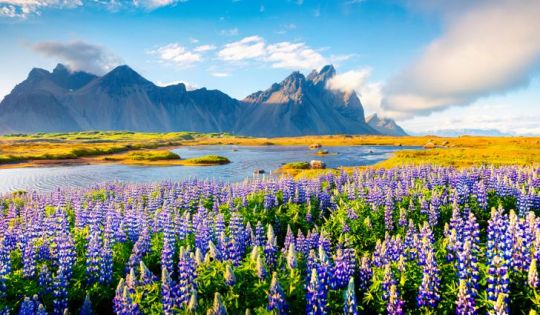
Iceland & Greenland
It’s certainly a question we get often enough – which destination is better for Arctic expeditions: Iceland or Greenland? Although differences between the two abound, there is a lot they have in common: both are exceptionally picturesque (for different reasons) and both offer phenomenal chances for wildlife-viewing and adventures in spectacular Arctic wilderness.
Figuring one which one is best overall is near-impossible although knowing a little about the two – and what sets them apart – will go a long way in helping you decide which one is ideal for you.
Iceland
Iceland seems to be the word on everyone’s lips nowadays, interest in the country rising swiftly in the last couple of years. And why on earth not? Iceland is truly sensational, a country revered for its incredible glaciers, dramatic fjords, jaw-dropping volcanoes, thermal springs, stupendous waterfalls and an absolutely colossal array of outdoor pursuits in striking wilderness that’s as lush and enticing as any you’ll ever see. Iceland speaks to the thrill-seeker and the nature lover, one who wants to indulge in both passions simultaneously.
Its capital city, Reykjavik, is one of the most vibrant cities in the world, one boasting a wicked nightlife, fantastic dining, distinctive architecture and easy-going people. Visiting Iceland is as easy as booking a flight to Reykjavik and taking it from there – there’s really nothing excessively difficult about travelling to Iceland, a country that showcases more variety of landscapes than its name would ever lead you to believe. Iceland is simply a fabulous travel destination if you love to mix a bit of city-buzz with your outdoor adventures and have plenty of comforts and luxuries along the whole way.
Greenland
hen there’s Greenland, Iceland’s westerly neighbour. Head to Greenland after visiting Iceland and you’ll be excused for thinking someone got totally drunk and mismatched their names. This magical icy wonderland is the most sparsely-populated non-continental island on earth.
There are barely 50,000 in this enormous expanse of Arctic land, as opposed to 340,000 who live in Iceland, which is 21 times smaller. Greenland isn’t technically an independent country, per se, but and an island administered by Denmark, a country with which it has had a strong bond for hundreds of years. A handful of insanely picturesque villages dot the coastline, interspersed with awe-inspiring fjords, glaciers and fantastical snowy landscapes.
There’s no road-infrastructure here so travelling is done either by helicopter or boat, both of which are expensive but immensely worthwhile. On land, you’ll meet a proud and traditional people, one that somehow treasures its isolation from the rest of the world. The local culture is unique and very fascinating, having developed its own tradition, customs, cuisine, art and costumes over the centuries – outside of the main towns, however, you journey is very much about Greenland’s overwhelming nature.
Greenland is unlike any other place on earth, revered for its fast-moving icebergs, UNESCO-listed fjords, its breath-taking glaciers (Jakobshavn is over 50km in length!) and its utterly surreal atmosphere. Nuuk, the capital, is a quirky place to explore, framed by astounding mountains and flanked by icebergs and an incredible fjord.
This isn’t the most picturesque town in Greenland but, being home to 17,000 hardy folks, it is the largest. Greenland is a hub for Arctic wildlife, both on its eastern shores – the Greenland Sea it shares with Iceland – but particularly on its western shores. Here is where you’ll find the Northwest Passage and Baffin Bay, the reputed ‘wildlife superhighway of the Arctic’. As opposed to Iceland, travel to Greenland necessitates some serious pre-planning. Everything should be pre-planned and pre-booked, Greenland is certainly not a country that facilitates last-minute independent travel.
0 notes
Photo

Iceland & Greenland
It’s certainly a question we get often enough – which destination is better for Arctic expeditions: Iceland or Greenland? Although differences between the two abound, there is a lot they have in common: both are exceptionally picturesque (for different reasons) and both offer phenomenal chances for wildlife-viewing and adventures in spectacular Arctic wilderness.
Figuring one which one is best overall is near-impossible although knowing a little about the two – and what sets them apart – will go a long way in helping you decide which one is ideal for you.
Iceland
Iceland seems to be the word on everyone’s lips nowadays, interest in the country rising swiftly in the last couple of years. And why on earth not? Iceland is truly sensational, a country revered for its incredible glaciers, dramatic fjords, jaw-dropping volcanoes, thermal springs, stupendous waterfalls and an absolutely colossal array of outdoor pursuits in striking wilderness that’s as lush and enticing as any you’ll ever see. Iceland speaks to the thrill-seeker and the nature lover, one who wants to indulge in both passions simultaneously.
Its capital city, Reykjavik, is one of the most vibrant cities in the world, one boasting a wicked nightlife, fantastic dining, distinctive architecture and easy-going people. Visiting Iceland is as easy as booking a flight to Reykjavik and taking it from there – there’s really nothing excessively difficult about travelling to Iceland, a country that showcases more variety of landscapes than its name would ever lead you to believe. Iceland is simply a fabulous travel destination if you love to mix a bit of city-buzz with your outdoor adventures and have plenty of comforts and luxuries along the whole way.
Greenland
hen there’s Greenland, Iceland’s westerly neighbour. Head to Greenland after visiting Iceland and you’ll be excused for thinking someone got totally drunk and mismatched their names. This magical icy wonderland is the most sparsely-populated non-continental island on earth.
There are barely 50,000 in this enormous expanse of Arctic land, as opposed to 340,000 who live in Iceland, which is 21 times smaller. Greenland isn’t technically an independent country, per se, but and an island administered by Denmark, a country with which it has had a strong bond for hundreds of years. A handful of insanely picturesque villages dot the coastline, interspersed with awe-inspiring fjords, glaciers and fantastical snowy landscapes.
There’s no road-infrastructure here so travelling is done either by helicopter or boat, both of which are expensive but immensely worthwhile. On land, you’ll meet a proud and traditional people, one that somehow treasures its isolation from the rest of the world. The local culture is unique and very fascinating, having developed its own tradition, customs, cuisine, art and costumes over the centuries – outside of the main towns, however, you journey is very much about Greenland’s overwhelming nature.
Greenland is unlike any other place on earth, revered for its fast-moving icebergs, UNESCO-listed fjords, its breath-taking glaciers (Jakobshavn is over 50km in length!) and its utterly surreal atmosphere. Nuuk, the capital, is a quirky place to explore, framed by astounding mountains and flanked by icebergs and an incredible fjord.
This isn’t the most picturesque town in Greenland but, being home to 17,000 hardy folks, it is the largest. Greenland is a hub for Arctic wildlife, both on its eastern shores – the Greenland Sea it shares with Iceland – but particularly on its western shores. Here is where you’ll find the Northwest Passage and Baffin Bay, the reputed ‘wildlife superhighway of the Arctic’. As opposed to Iceland, travel to Greenland necessitates some serious pre-planning. Everything should be pre-planned and pre-booked, Greenland is certainly not a country that facilitates last-minute independent travel.
0 notes